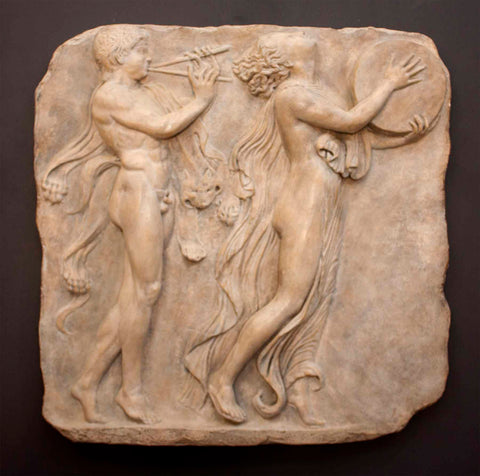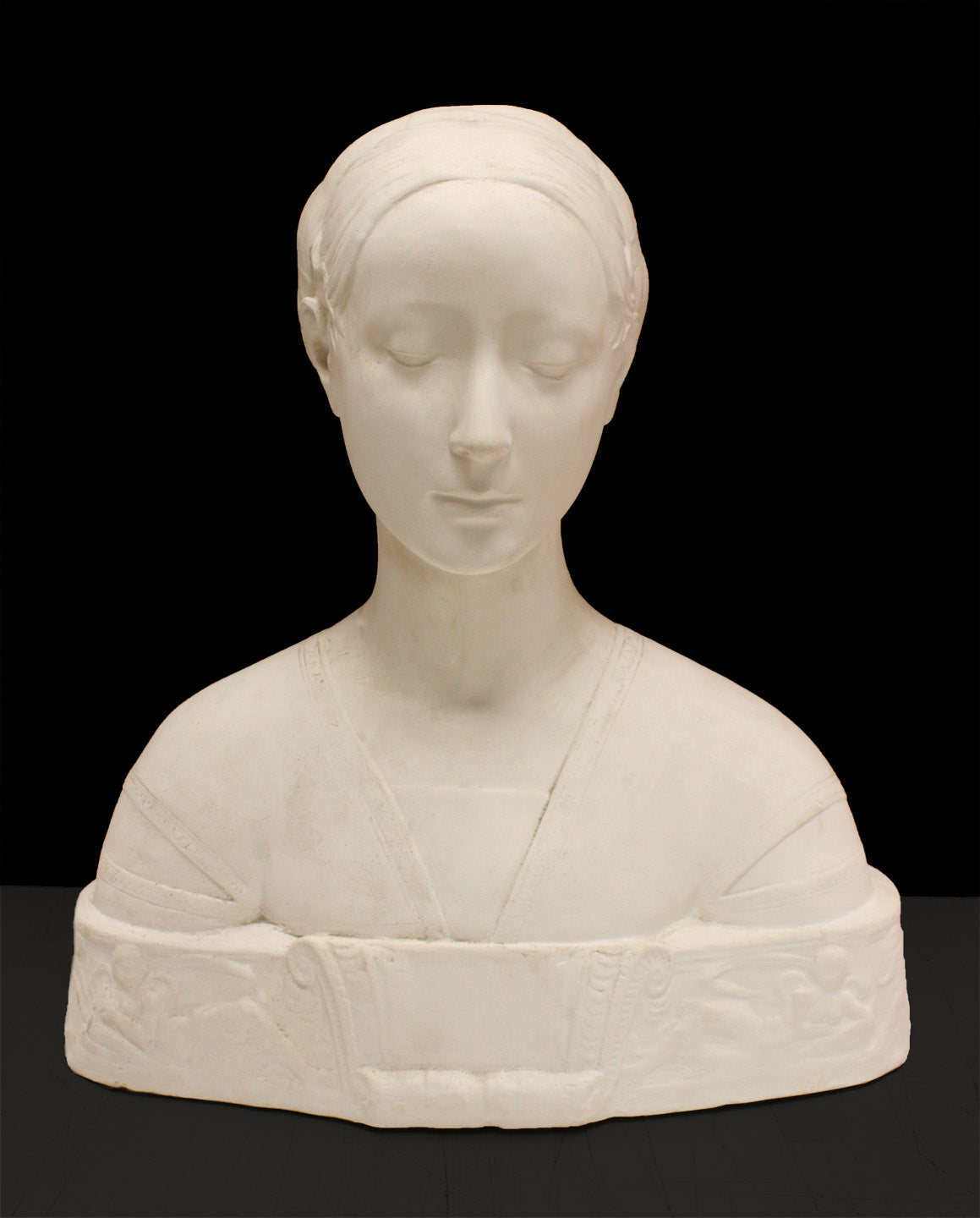I recently did some research on our two reliefs pictured below, and it proved to be an exciting journey! I read articles, scoured museum websites, and talked with art historians and museum curators.
The right side of the relief, our Item #14, Bacchic Dance
The left side of the relief, our Item #15, Satyr with Panther
We at the Caproni Collection love these pieces because they are not only beautiful, but are actually two halves of one relief. The full marble relief is identified only as “a maenad and two satyrs in a Bacchic procession.” Today, the two known originals are in the collections of the British Museum and the National Archaeological Museum in Naples. Why two? The Greeks, under Roman rule, mass-produced artwork like this one! Also, in two-dimensional arts especially, they created different compositions utilizing the same figures; these three figures likely appear on vases, in reliefs, and in other artwork and artifacts you’ll see in museums. It’s odd to think of mass-production beyond our modern world, but it’s fascinating thinking that this relief was popular in Ancient Rome!
The Greeks that made artwork like this relief are known as Neo-Attic artists. They lived largely in Athens and Rome in the first century BCE to second century CE. Their clientele was mainly prosperous Romans. The Romans looked to the Greeks for inspiration in all aspects of culture, prompting the Greeks to create new art that resembled the most desired styles of Greek art.

Item #15, Satyr with Panther and Item #14, Bacchic Dance displayed as they are in the original marbles
The artwork depicts two fauns (Roman)/satyrs (Greek) and a bacchante (Roman)/maenad (Greek) festively celebrating their god Bacchus (Roman)/Dionysus (Greek), the god of wine. The bacchante and faun on the right both play instruments. The bacchante’s drapery partially covers her body, while the faun behind her only wears an animal hide over his left shoulder. The other faun has an animal hide draped over his extended left arm and carries a thyrsus, which was a staff bore by Bacchus and his followers. A panther walks beside him.
Be sure to take a look at the museums’ marble originals that I linked to above. Although the depiction of the Bacchic celebration is “set in stone” (see what I did there?), you can see and feel the movement of the figures as they walk.
If you’re interested in other representations of the cult of Bacchus, check out a blog post we wrote entitled “Bacchus, Jupiter, and a Bacchante come alive!” For other Roman or Greek art, go to All Products and use the “Shop by Time Period” filter.
I hope you enjoyed learning about the background of these Bacchic reliefs as much as I did!
Best,
Kayla Fletcher
Curator
Want content like this delivered to your inbox? Sign up for our newsletter!




Comment
Hi, this left and right relief is also displayed at Symphony Hall in Boston!